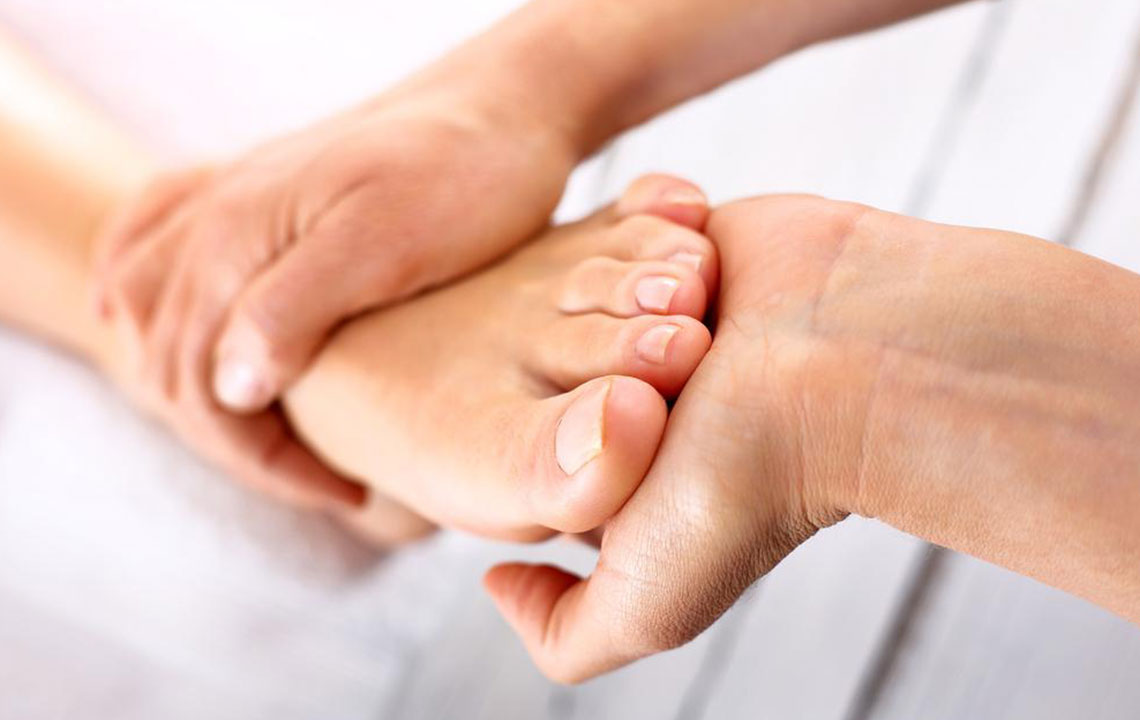6 Natural Ways for Treating Nerve Pain

Nerve pain is the result of damaged nerves. Often persistent, nerve pain can be symptomatic of other ailments such as shingles, diabetes, rheumatoid arthritis, hepatitis C, cancer, diphtheria, or HIV. Apart from these, there are other causes of nerve pain: deficiency of essential vitamins, aging, and toxin exposure. It has been observed that nearly 30% of nerve pain instances do not have any definite cause.
Nerve pain is usually experienced as pinpricks, stabbing, burning sensation, prickling, and sudden electric shocks. The intensity of the pain varies from person to person depending on the cause, the person’s health condition, and their immunity strength. Also known as neuropathic pain, nerve pain may cause hindrance in carrying out routine activities and may make it difficult for the person to work. This may further lead to anxiety, sleeping disorder, or depression.
Common signs of nerve pain
The feelings of pinpricks, tingling, burning sensation, and so on are the obvious signs of nerve pain. However, these are not the only signs to diagnose and detect nerve pain. The following are some of the additional symptoms that may indicate that what is being experienced is really nerve pain:
- It becomes difficult to move the body parts affected by the pain. There is a loss of motor ability,
- There is a sharp, tingling pain from the lower back to one of the legs. The pain always occurs in this part of the body.
- The ability to coordinate declines and there might be repeated episodes of stumbling and falling.
- There are occasional periods of intense headaches. These headaches seem to like receiving brief electric shocks.
- There is excess or no sweating at all.
- Bladder becomes weak requiring more visits to the bathroom.
- There is no sensation when there is an injury such as burns or cuts.
Popular nerve pain treatment options
There are ways to treat nerve pain; nerve pain treatments can decrease the intensity of pain, or in certain cases, treatments can eliminate the pain completely by repairing the damaged nerves. The latter can happen only when the damage to the nerves is of lower degree. A doctor can prescribe medications that can help to alleviate the pain. Along with doctor prescribed nerve pain treatments, certain natural nerve pain treatments can help eliminate the discomfort associated with neuropathic pain.
- Watch your weight: Being overweight puts unnecessary strain on the back and the joints of the body. This will put pressure on the nerves and often lead to inflammation. Hence, it is necessary to monitor the weight and maintain a healthy body mass index constantly.
- Eat an anti-inflammatory diet: This is one of the easiest nerve pain treatments. Inflammation is often related to nerve pain. Pain can be alleviated to a great extent by eating an anti-inflammatory diet. With a fall in the degree of inflammation, discomfort due to nerve pain is also eliminated. An anti-inflammatory diet comprises whole foods packed with nutrients. Foods that prevent inflammation include fresh fruits and vegetables, green tea, olive oil, legumes, seeds, almonds, walnuts, turmeric, ginger, and lots of water. Avoid processed foods such as vegetable and corn oil, baked products, processed fruit juices, fast foods, white bread, sweetened cereals, and so on. Also, avoid or keep at minimum, the consumption of alcohol. These will negate the positive effects of your nerve pain treatments.
- Apply hot and cold packs: Hot and cold packs can be applied to the affected areas to get temporary relief from nerve pain. Ice packs numb the pain points and alleviates discomfort. An ice pack can be made by filling a Ziploc bag with crushed ice and wrapping it in the towel. The towel will prevent overcooling. Apply this cold pack for 20 minutes. This can be followed by the application of a heat pack. A heating pad or a warm moist towel can be used for this purpose. Apply the heat pack for 20 minutes. Alternate the hot and cold compress for some time until the pain subsides.
- Do stretching exercises: Often tight muscles can add to nerve pain. The nerves in these areas are pinched, thereby aggravating the pain. Stretching exercises can provide immediate relief from nerve pain along with eliminating stiffness, boosting blood flow, and increasing the motion range of the affected areas of the body. It is necessary to remember that these exercises should be gentle and done with the correct body posture. A chiropractor or a physical therapist can recommend the correct exercises to alleviate nerve pain.
- Go for alternate therapies: Alternate nerve pain treatments such as acupuncture, aromatherapy, meditation, and homeopathy have been found to be effective in eliminating nerve pain. Therapies such as acupuncture and aromatherapy release endorphins, improve blood circulation, eliminate pressure from the affected nerves, and remove inflammation. Homeopathy nerve pain treatments involve taking certain supplements that can alleviate the pain symptoms.
- Take sufficient rest: It has been observed that nerve pain is at its worse during night time. This makes it essential that sleep should not be compromised with. It is necessary to ensure a good night’s sleep by following healthy sleeping habits such as avoiding late afternoon caffeine intake and keeping a fixed bedtime schedule.


